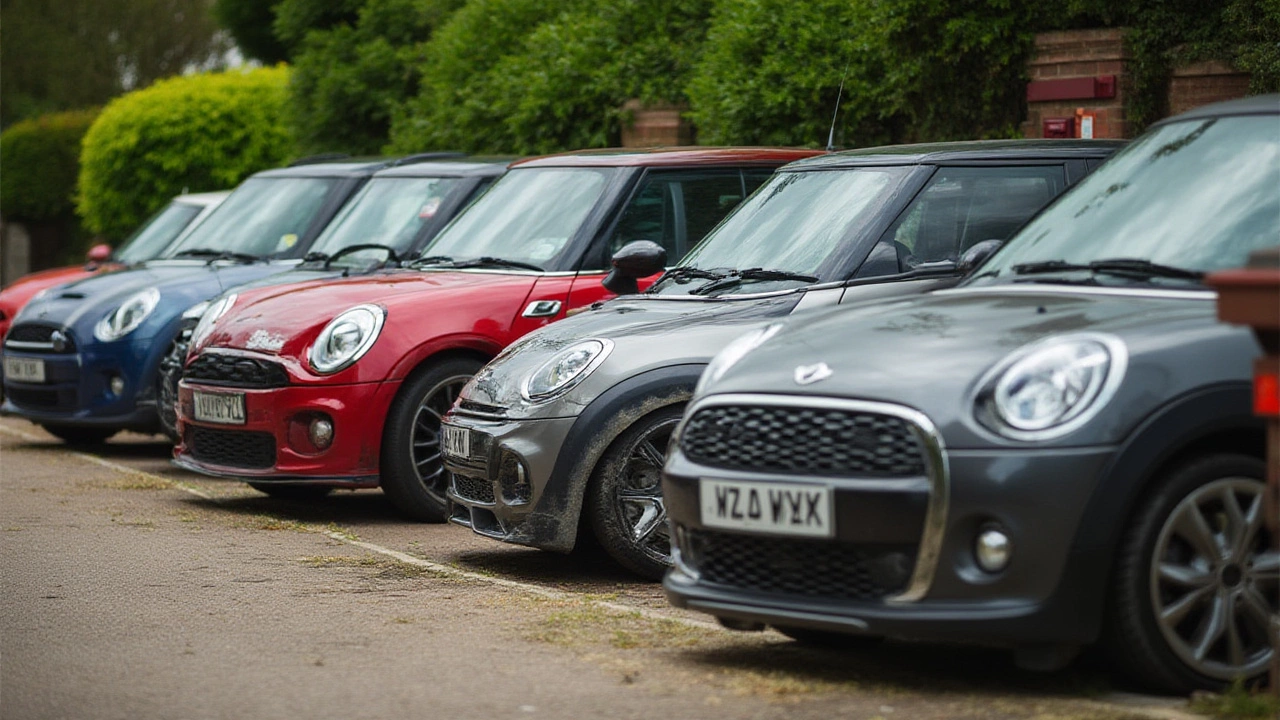Ever stared at two cars parked side by side and noticed how one just looks slicker—even when you can’t put your finger on why? A lot of times, it comes down to the wheels. The argument over whether alloy wheels outperform traditional steel rims gets more heated than a blacktop in Adelaide’s summer. But behind the glossy showroom displays, what matters for real-world drivers aren’t just good looks—it’s about strength, comfort, budget, and maybe even bragging rights when you’re at the servo filling up. Some swear by the shine and swagger of alloys while others stick with the familiar feel of solid rims. Truth is, both options have their quirks, and the choice isn’t just about what turns heads at the next cars and coffee meet.
The Real Difference: Materials, Manufacturing, and What It Means for You
Let’s clear the air—when people talk about “rims,” they usually mean the entire wheel, but in mechanic-speak, the rim is just the outer edge. Most of us are talking about the whole deal: alloy wheels versus steel wheels (aka steel rims). What’s the main difference? It’s not just the price tag. Alloy wheels get made mostly from aluminum mixed with other metals like magnesium, all poured and polished to look like something you’d hang on the wall if your partner let you. Steel rims keep it old-school, stamped or pressed from sheets of iron and carbon, then welded together like something from your granddad’s shed.
The material really changes the game. Alloys are lighter because aluminum’s low density means you lose weight without losing much strength. A lighter wheel means less unsprung mass—the part of your car that’s not supported by the suspension. That means tighter steering, zippier acceleration, better handling around corners, and often better fuel economy, especially for city drivers who are stuck in start-stop traffic. If you love spirited drives through Adelaide Hills or nipping through morning traffic, you’ll notice the difference. Steel rims, being heavier, can drag you down a bit, but they’re tough. And when you hit a pothole the size of a footy field, that toughness can mean fewer dents and dings.
Here’s a quick breakdown for reference:
| Feature | Alloy Wheels | Steel Rims |
|---|---|---|
| Average Weight (15” wheel) | 7-9 kg | 10-12 kg |
| Looks | Variety, stylish | Plain, utilitarian |
| Price (AUD, new) | $150-500+ | $50-120 |
| Corrosion Resistance | Good | Needs paint/coating |
| Common Fitment | Sports/premium cars | Base/fleet models |
| Repairability | Trickier (cracks, bends) | Easy (bends can be hammered) |
| Winter/Off-Road Use | Can corrode from salt | Ideal |
The takeaway here? Think about where and how you drive. Chasing style and performance? Alloys win. Beating up the car on work sites or gravel backroads? Steel’s your mate.

Performance, Durability, and When Looks Really Matter
Let’s get technical, but not boring. A lighter wheel doesn’t just save you a bit at the pump—it gives your suspension less work, so you get a smoother ride, especially over bumpy local roads. That’s the vibe you get in cars specced for fun—think Mazda MX-5s or even the classic Commodore SV6s sitting on stock alloys. Lighter wheels also cool down brakes quicker, which matters when you’re towing a trailer along the Stuart Highway or just blasting down your favorite Adelaide curves. Steel’s big advantage comes from its toughness. If you’re constantly curb-checking your rims or loading fifteen bags of soil into the boot, alloys can bend and crack, sometimes beyond repair, while steel rims can usually be hammered back into shape.
There’s another side to this: styling. Car makers love alloys because you can mold and shape them into wild designs. If you want your Corolla to channel a bit of Euro flair or give your Hilux that tough, off-road look, alloys offer a massive menu. Steel rims? Let’s just say they’re the work boots, not the dress shoes. When you look at taxis, utes, or tradies’ vans, you’ll spot steelies nine times out of ten. A rusted or chipped steel rim can start to look tired pretty quickly though. On the other hand, a scraped alloy wheel is annoying, and getting it repaired can be pricey—think $120 or more per wheel for a full refurb, and you might need to wait days. Sometimes, replacing them makes more sense, but it’s not cheap.
Then there’s winter. Sure, we don’t get massive blizzards in Adelaide, but across southern Australia (or if you road-trip to snowy regions), salt and sand do their worst. Steel rims handle the grit better because you can repaint them easily, which is why European drivers usually have a set of steel wheels for winter tyres. Alloys can corrode from salt and get pitted, especially if you never clean them. And be honest—when was the last time you actually scrubbed the inner barrel of your wheels?
Here are some handy tips:
- If you want the best for your car’s resale value, alloys increase appeal. Just keep them clean and undamaged.
- If you drive a lot on construction sites or rural roads, steel rims will save you on repairs.
- Check your owner’s manual—some cars’ braking and suspension setups are tuned for the weight of the original wheels. Swapping steel for alloys (or vice versa) can affect things like tyre wear.
- Alloys need more careful balancing and fitting; a bad job leads to vibrations or shaky handling over 100 km/h.
- For serious motorsport, forged alloys are used—these are lighter and stronger than standard alloys, and you’ll pay for the privilege.
Interesting stat? The global alloy wheel market is tipped to hit nearly AUD 30 billion by 2028, with Asia-Pacific leading the way, mostly due to car enthusiasts and changing design trends. Yet, about 55% of the world’s vehicles still roll out on steel wheels. So, it’s not just about what’s new and flashy. There’s a reason steel has lasted this long.

What’s Best for Your Drive: Making the Smart Choice
The decision isn’t as simple as picking what the bloke next door says looks cooler. Ask yourself how you use your car every day. Do you need rugged practicality, or do small performance tweaks genuinely matter to you? If you’re keeping an eye on the budget, swapping to alloys from steel can be a bit costly. The average set of four new 17-inch alloy wheels can run you over $1200, not counting new tyres. And unlike steel rims, alloys can be dented or cracked by climbing curbs too quickly or by one big pothole—and even the best repair shops sometimes can’t fix a cracked alloy safely.
On the flip side, if you love showing up at your local car meet or want to personalize your ride, nothing beats the pop alloys give. And they’re not just for hot hatches—SUVs, utes, and even caravans in South Australia can all get an upgrade. The Australian new car market has shifted heavily—alloy wheels are standard on nearly all mid- to higher-spec models since 2020. If you buy a new Kia or Toyota, odds are it’ll roll out on alloys, with steelies left for base-models or tradies who accept practicality over flair.
Want to keep your wheels looking fresh? Here’s how:
- Clean your wheels every two weeks—even just hosing off brake dust and dirt can make alloys last longer.
- For steel rims, touch up paint scrapes to prevent rust. Rust is less about looks and more about wheel life—don’t let it spread.
- Don’t use regular household cleaners—pick ones made for wheels. Harsh chemicals strip coatings and ruin finishes.
- If you do curb a wheel, get it checked for cracks—especially with alloys. Hairline cracks can cause slow air leaks or, worst case, total failure at highway speeds.
- When upgrading, always buy from a reputable supplier. Cheap knock-off alloys can look the part but collapse under real-world stress. Ask for weight and load ratings before purchase.
- Store your off-season set (if you swap wheels, say, for summer or winter) clean and dry.
Here’s a fun fact: a lighter alloy wheel can save about 0.2 to 0.5 litres per 100km in stop-start city driving if you’re switching from heavy steel. That means, across an average year commuting in Adelaide, you could save enough on fuel for a couple of Friday pub meals. Not bad for something most drivers never notice.
The bottom line? There’s no such thing as “the best” for everyone. The real move is matching the wheel to your life. If you value style, improved handling, and smoother rides, alloys take the win. If you clock brutal miles, stick to rough roads, or don’t want to sweat scrapes and potholes, steel rims hold their ground. Either way, next time someone at the pub asks, “Is alloy better than rim?” you’ll have the answer—along with a few smart tips to back up your choice.